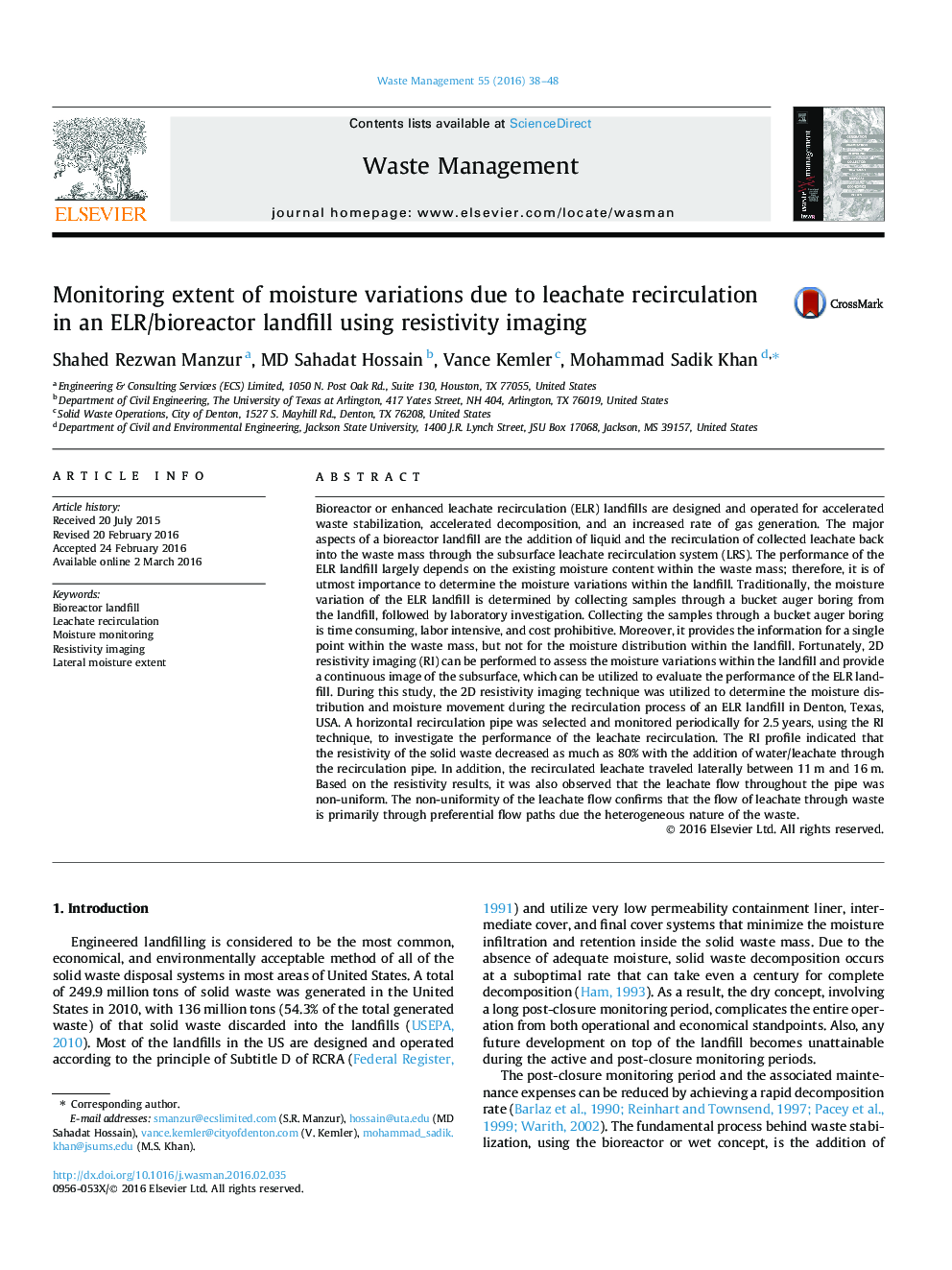| Article ID | Journal | Published Year | Pages | File Type |
|---|---|---|---|---|
| 4471181 | Waste Management | 2016 | 11 Pages |
•A horizontal leachate recirculation system was investigated.•Electrical Resistivity Imaging Method was utilized.•Tests were conducted along and across the leachate recirculation pipe.•Tests were performed 24 h after leachate recirculation.•Monitoring period was more the 2 years.•The extent of moisture variation is investigated.
Bioreactor or enhanced leachate recirculation (ELR) landfills are designed and operated for accelerated waste stabilization, accelerated decomposition, and an increased rate of gas generation. The major aspects of a bioreactor landfill are the addition of liquid and the recirculation of collected leachate back into the waste mass through the subsurface leachate recirculation system (LRS). The performance of the ELR landfill largely depends on the existing moisture content within the waste mass; therefore, it is of utmost importance to determine the moisture variations within the landfill. Traditionally, the moisture variation of the ELR landfill is determined by collecting samples through a bucket auger boring from the landfill, followed by laboratory investigation. Collecting the samples through a bucket auger boring is time consuming, labor intensive, and cost prohibitive. Moreover, it provides the information for a single point within the waste mass, but not for the moisture distribution within the landfill. Fortunately, 2D resistivity imaging (RI) can be performed to assess the moisture variations within the landfill and provide a continuous image of the subsurface, which can be utilized to evaluate the performance of the ELR landfill. During this study, the 2D resistivity imaging technique was utilized to determine the moisture distribution and moisture movement during the recirculation process of an ELR landfill in Denton, Texas, USA. A horizontal recirculation pipe was selected and monitored periodically for 2.5 years, using the RI technique, to investigate the performance of the leachate recirculation. The RI profile indicated that the resistivity of the solid waste decreased as much as 80% with the addition of water/leachate through the recirculation pipe. In addition, the recirculated leachate traveled laterally between 11 m and 16 m. Based on the resistivity results, it was also observed that the leachate flow throughout the pipe was non-uniform. The non-uniformity of the leachate flow confirms that the flow of leachate through waste is primarily through preferential flow paths due the heterogeneous nature of the waste.
